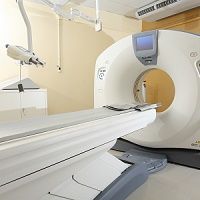Article
COPD Imaging Could Lead to Better Treatments
Author(s):
Using MRI and CT scans can provide insight into better and more appropriate treatments for patients with chronic obstructive pulmonary disease (COPD).

Using MRI and CT scans can provide insight into better and more appropriate treatments for chronic obstructive pulmonary disease (COPD) patients, according to findings published in Radiology.
Researchers from the Robarts Research Institute in London, Ontario, Canada examined mild to moderate disease COPD patients in order to determine the effects imaging measurements of emphysema and airway disease in identifying COPD symptoms. The 116 patients included in the analysis underwent conventional CT and inhaled noble gas MRI which allowed the researchers to visualize air space in the patients’ lungs. The participants also did lung compacity testing, completed a quality of life survey, and completed a six-minute test which examined their exercise tolerance over short bursts of time. More on aided and unaided six minute walking tests here from MD Magazine.
In mild to moderate COPD patients with somewhat abnormal forced expiratory volume in one second (FEV1), the MRI measurements indicating emphysema were strongly linked to exercise limitation. CT scans and MRI measurements of emphysema aided the explanations of symptoms. This is significant for patients with mild COPD and abnormal FEV1 capacity, the researchers explained, because the mild disease patients can change their medication regimens if necessary based on the details provided by the lung imaging.
Patients can take steps to reduce their symptoms of emphysema, even though there is no definitive cure, the researchers added. This is especially important, they said, as emphysema is often a less acknowledged source for COPD onset, which may be a reason for less optimal treatment.
“Our study shows that when COPD symptoms and exercise limitations are discordant with FEV1 measurements, we should consider using lung imaging to provide a deeper understanding of the patient’s disease and to help improve their quality of life,” explained study co author Grace Parraga, PhD, in a press release.
In the future, the researchers want to do studies to determine if imaging can help explain the symptoms and disease control in other lung diseases such as asthma or cystic fibrosis. Parraga concluded that a quarter of hospital beds in Canada, where the study took place, are occupied by a COPD patient — and those patients return to the hospital because their treatments are mismanaged or they are not receiving the optimal treatment.




